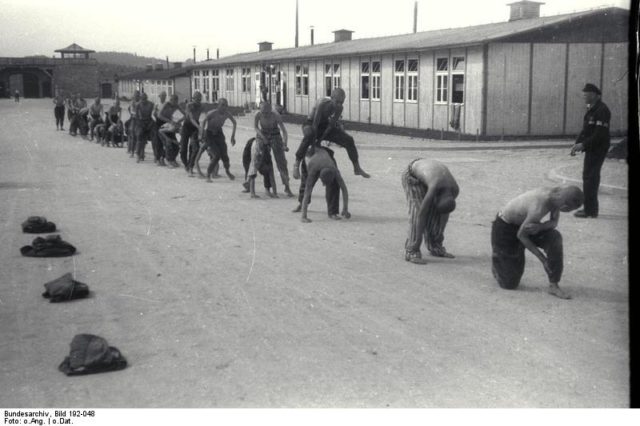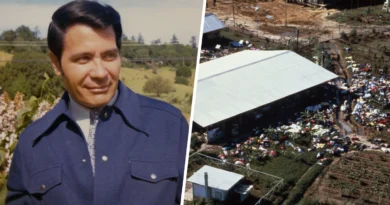Mauthausen-Gusen Concentration Camp: A Powerful Reminder of the WWII
The Mauthausen-Gusen concentration camp complex was a network of Nazi concentration camps during World War II. The main camp, Mauthausen, was located in Austria, and the subcamp Gusen was located in nearby Bavaria, Germany. The camp was used for forced labor and the extermination of prisoners, particularly Jews, political dissidents, and prisoners of war.
The conditions in the camp were brutal, with prisoners subjected to inhumane treatment, starvation, and disease. Many prisoners died as a result of the harsh conditions, and the camp is estimated to have been responsible for the deaths of over 120,000 people. The camp was liberated by the Allies in 1945, and the post-war trials led to several high-ranking SS officers being convicted of war crimes for their role in the operation of the camp.

The Establishment of the Camp
The Mauthausen concentration camp was established in August 1938, just a few months after the Anschluss, the annexation of Austria into Nazi Germany. Initially, the camp was used to detain political prisoners, particularly members of the Austrian resistance. However, the camp’s purpose soon expanded to include the forced labor of prisoners for the production of armaments and other war materials. The camp was also used as a training ground for SS personnel.

In 1940, the Gusen subcamp was established as an extension of the Mauthausen camp. Gusen was located in nearby Bavaria and was used primarily for the production of underground tunnels and underground armaments factories. The camp also had a stone quarry where prisoners were forced to work in brutal conditions.
The Conditions in the Camp
The conditions in the camp were designed to be as harsh as possible, with the aim of breaking the will of the prisoners. The prisoners were subjected to forced labor, starvation, disease, and inhumane treatment. The prisoners were given minimal food rations and were often forced to work long hours without rest. Many prisoners died as a result of the harsh conditions, with some estimates putting the death toll at over 120,000 people.

The camp was also used as a site of medical experimentation, with prisoners being used as test subjects for new drugs and procedures. The prisoners were often subjected to these experiments without their consent and without any regard for their well-being.
The prisoners at the camp were also subjected to various forms of punishment, including floggings, hangings, and being thrown into the camp’s “death pit.” The death pit was a deep hole in the ground where prisoners were thrown to their deaths.
Popular Means of Killing
Many inmates were shipped off to die, while others died on site. At first, there was no gas chamber at the facility. That would change in 1940 when they started utilizing mobile gas chambers. A hose would be hooked up to the exhaust of a van which had its engine running. Carbon monoxide fumes would funnel along the hose into the prisoners in the back of the van causing poisoning and suffocation. Eventually, this would change, when the camp built a gas chamber, able to kill 120 people at a time.
Another form of killing were beatings. Prisoners were subjected to abuse for anything the regime saw as wrong and were often beaten to death. Inmates were also made to do useless exercises that were designed to wear them down, for example playing leapfrog for several hours.

It is believed there were more than 60 ways people were murdered in bulk at the camp.
The Liberation of the Camp
The camp was liberated by the Allies in May 1945, just a few weeks before the end of the war in Europe. The camp was found to be in a state of utter devastation, with many of the prisoners malnourished and suffering from various diseases. The camp’s SS personnel had fled before the arrival of the Allies, leaving behind the prisoners and a small number of SS guards who had been left to maintain order.
The Post-War Trials
The post-war trials of the SS personnel who had been involved in the operation of the camp led to several high-ranking officers being convicted of war crimes. The trials were held by both American and Austrian authorities, with many of the defendants being found guilty and sentenced to death.

The Mauthausen-Gusen concentration camp complex is a reminder of the atrocities that were committed during the Holocaust. The camp is a symbol of the inhumane treatment of prisoners and the brutal nature of the Nazi regime. Today, the camp serves as a memorial and a reminder of the atrocities that occurred there, with the main camp being converted into a museum and memorial site.
Visitors can see the remains of the camp, including the barracks, the death pit, and the quarry where prisoners were forced to work. The museum also displays artifacts from the camp, including personal belongings of the prisoners, and provides information about the history of the camp and the experiences of the prisoners.
The Legacy of the Camp
The Mauthausen-Gusen concentration camp complex is also remembered for the heroism of the prisoners who managed to survive the inhumane conditions and the brutal treatment. Many of the prisoners were able to resist the efforts of the SS to break their spirits, and many of them were able to keep their humanity in the face of unspeakable horrors.
The legacy of the Mauthausen-Gusen concentration camp complex serves as a reminder of the importance of remembering the past and learning from it. It is a reminder of the need to stand against hatred and oppression, and to work towards a more just and equal society. It is a reminder that we must always be vigilant against the rise of fascism, racism, and other forms of oppression, and work to ensure that such atrocities never happen again.
In conclusion,
The Mauthausen-Gusen concentration camp complex was a nightmarish place where thousands of innocent people were subjected to inhumane treatment, forced labor, starvation, and disease. The camp was responsible for the deaths of over 120,000 people and it serves as a reminder of the atrocities committed during the Holocaust. The camp’s liberation by the Allies and the post-war trials of SS personnel were a small step towards justice, but the camp remains a painful reminder of the darkest chapter of human history.
